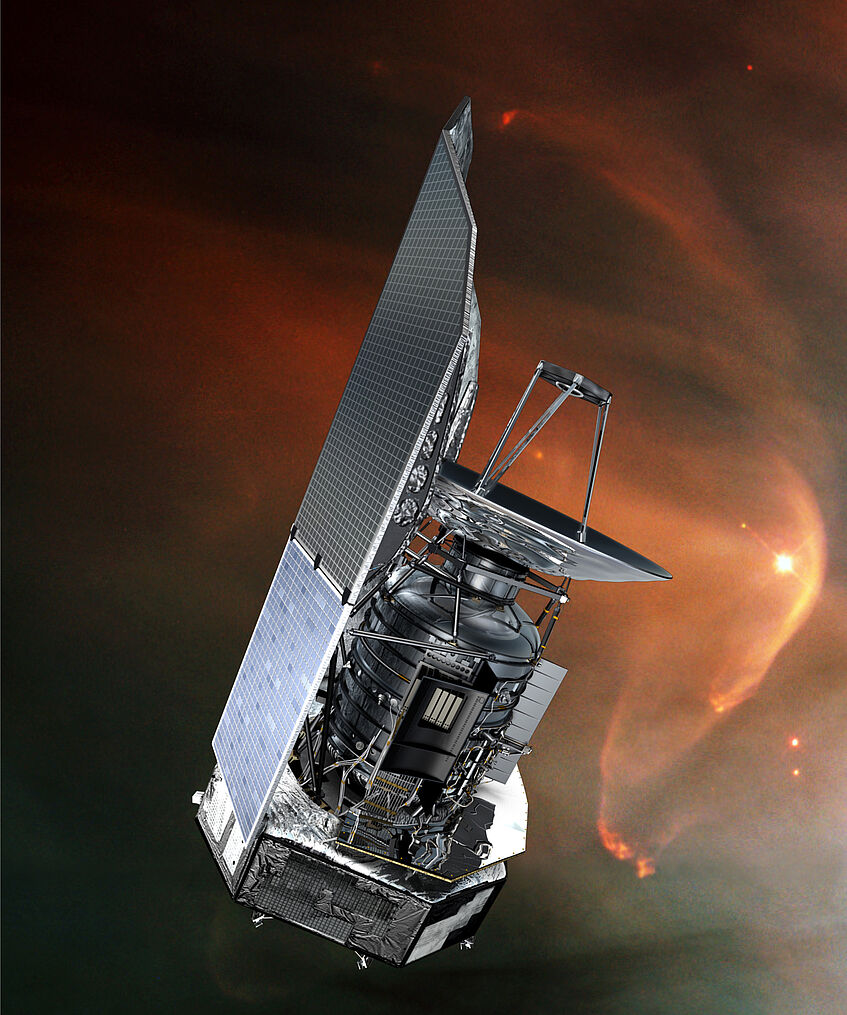HERSCHEL

Artist's impression of Herschel.
HERSCHEL
Mission Overview
The Herschel infrared space observatory is named after Sir William Herschel and with its 3.5m diameter reflecting telescope it is the largest observatory of its type launched to date. Herschel does infrared photometry and spectroscopy with high precision and sensitivity in a wavelength regime of 55 - 672 µm. The infrared and sub-mm wavelengths are ideal to investigate dust around stars and other planetary systems as well as high-redshift galaxies in the young universe. On board the satellite are the instruments PACS (Photodetector Array Camera and Spectrometer), SPIRE (Spectral and Photometric Imaging Receiver), and HIFI (Heterodyne Instrument for the Far Infrared).
Contribution of our Team
PACS is Austria's first instrument contribution to the instrumentation of an ESA space astronomy satellite. Due to the large distance of the Herschel observatory to Earth, an On-Board Data Reduction and Compression Software (OBSW) is necessary. The development of complex algorithms was performed to achieve a compression factor of 40 and to minimize information loss when data is sent to Earth. Furthermore, our team participates in the Instrument Control Center (ICC) where data has to be reconstructed and the data quality evaluated.
Involved Personnel
Management, Science Lead: F. Kerschbaum
OBSW Development: R. Ottensamer, N. Belbachir, D. Hönigmann
WP Lead "OBSW": H. Bischof
Team: A. Baier, C. Diethart, E. Greschitz, J. Hron, C. Kropiunig, Th. Lebzelter, F. Pezzei, Th. Posch, P. Reegen, C. Reimers, C. Saraceno, W. Zeilinger
Milestones
Launch date: 14 May 2009
Last observation: 29 April 2013
Funding
Links
European Space Agency's Herschel Space Observatory
Science communication project: Herschel and the invisible end of the rainbow
